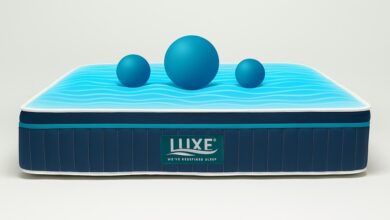What Is a CNC Milling Machine?

Manufacturing must be precise, quick and efficient. One technology that has caused a paradigm shift in how production occurs is the CNC milling machine. CNC milling provides accuracy and versatility whether milling metals, plastics or composites. If you are interested in learning more about the differences between CNC and manual milling, or thinking about transitioning from manual machines, if you want to learn more please click here.
In this guide we define what CNC milling machines are, how they function, what types there are and how they became ubiquitous to modern industry.
How Does a CNC Milling Machine Work?
A CNC milling machine, or Computer Numerical Control milling machine, is a programmable tool that is used to “mill,” or remove from a solid piece, material. Compared to manual milling, CNC machines are automated based on codes generated by a computer, resulting of perfect precision and elimination of human errors.
Step-by-Step Process of CNC Milling:
- The Part Design :It starts with the design of a three dimensional model of the part using computer aided design software.
- Programming This digital file is processed through CAM, or computer- aided manufacturing software, which generates a G-code file that directs the machine how to move the cutting tool.
- Set Up Machine The workpiece is properly affixed to the machine table and an appropriate cutting tool is chosen.
- Manufacturing machining The machine simply executes commands to move the cutting tool in the axes to form the part in accordance with programmed instructions.
- Quality Check Once the milling process is done, the part is checked to verify if it is within specifications in terms of accuracy and surface finish.
Types of CNC Milling Machines:
CNC milling machines are made in different configurations based on the axis in which they move and are capable of moving:
- 3 Axis CNC Machines This type of machines can move the cutting tool in the three linear directions X, Y and Z. They work well for simple designs and are the most commonly used variety.
- 4-Axis CNC Machines This type adds an axis of rotation, enabling the workpiece to rotate during machining. It is especially useful for more complex shapes and curved surfaces.
- 5-Axis CNC Mill These machines can move in 5 directions at once, allowing complex designs and undercuts w With one setup.
CNC Milling vs. Manual Milling:
Manual milling requires a skilled operator to control the machine manually, making it slower and prone to human errors. CNC milling, on the other hand, is automated and offers:
- Superior Precision – Achieving tolerances within microns.
- Higher Efficiency – Capable of running 24/7 with minimal supervision.
- Repeatability – Every part is identical in large production runs.
For manufacturers seeking consistency and scalability, CNC milling is the preferred choice.
Key Applications of CNC Milling Machines:
Among others due to their capacity to accommodate complex design, CNC milling machines are ubiquitous in various sectors:
- Aerospace : Lightweight, high-strength components.
- Automotive:Engine components, transmission cases and prototypes.
- Medical: Surgical tools, Dental implants and Orthopedic devices.
- Electronics:Circuit boards, connectors, and enclosures.
Why Choose BORUI CNC for CNC Milling Machines?
Quality and reliability are fundamental when it comes to purchasing a CNC milling machine. BORUI CNC is a reliable manufacturer that provides good, high quality machines. Their CNC milling machines are meant to be precise, efficient and have long lasting durability making them suitable for small and large businesses alike.
Whether you’re moving away from manual or upgrading to a new system, BORUI CNC has what you are looking for.
Advantages of CNC Milling Machines:
- Extreme Accuracy :Ideal for highly detailed and complex designs.
- Quicker Production : Substantially reduces cycle time.
- Versatile :Works with metals, plastics and composites.
- Affordable:Reduced waste and labor costs over time.
- Safer and More Reliable :Less human machine intervention leads to a safer working environment.
Future Trends in CNC Milling:
The evolution of CNC technology is ongoing; some recent advances include:
- Automated by Robotics :Suitable for completely automated loading and unloading of parts.
- Smart Sensors :Tools’ wear monitoring and process optimization for machining.
- Hybrid Systems : Systems that combine an additive manufacturing process together with CNCmilling within the same machine.
These advancements will make CNC milling an even broader and future-ready technology.
Conclusion:
CNC milling machines are at the core of precision engineering. They are an important tool for manufacturers because they allow consistent high quality parts to be deliver in any industry . Whether creating a prototype or CNC milling complicated aerospace parts, CNC milling is efficient and accurate at all stages of the process.
If you are considering CNC technology for your workshop or factory, it is important to first know the advantages and differences between a CNC and a manual mill. Find out more about these options to see which is best for you. And when peace of mind and performance are part of the equation when shopping for a dependable CNC milling machine BORUI CNC fits the bill..



